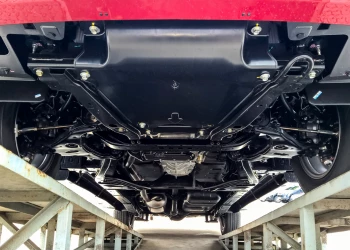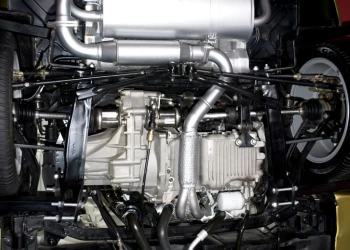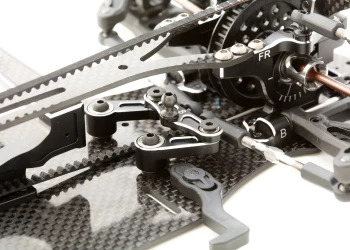Q&A: Erhan Eyol, Functional Manager for Chassis Engineering at Ford Otosan
Add bookmarkDevelopment of advanced suspension systems continues to evolve at a rapid pace. To facilitate the sharing of ideas among the leaders in the field, Automotive IQ hosts its annual Advanced Suspension Systems conference.
Attendees have the opportunity to learn about latest suspension breakthroughs, including development of electronics systems, new innovations in lightweight technology, and get answers to important questions in the realm of electrified vehicles.
As functional manager for chassis engineering at Ford Otosan in Turkey, Erhan Eyol is perfectly placed to give his thoughts on the future of suspension for heavy duty vehicles:
First up, could you please explain what your position entails?
I manage the functional and technical delivery of all chassis systems to the vehicle platforms on Ford Trucks (heavy duty) and Ford's Transit, Connect and Courier vehicle programs. I assume the leadership of nine functional teams (70 to 100 engineers depending on projects); air and mechanical suspensions, brake modulation, actuation and foundation systems, wheels and tires, chassis frame, chassis controls and steering systems.
What are the main activities and strategies to reduce weight for heavy duty vehicles?
Activities and strategies for weight reduction on heavy duty vehicles (HDVs) are primarily shaped by regulations on greenhouse gas (GHS) emissions, as in passenger vehicles. The next important target is to increase payload of HDVs within the limits defined by road regulations. Lightweighting is the main strategy to tackle these challenges. The first step is design optimization (i.e. topology) with a better understanding of customer usage. According to the usage profiles, CAE optimization using new manufacturing technologies is utilized to reduce weight.
Material change can be coupled with topology. Considering cost advantage of aluminum compared to polymer matrix composites (PMC), aluminum usage is, for now, getting more common. Considering future technical requirements, PMC usage on structural parts has big potential as well. Composite leaf spring usage is one example.
Please tell us more about smart materials that are being used for lightweight suspensions.
PMC usage enables us to have lightweight designs but also, thanks to their low temperature manufacturing processes, sensors can be embedded in them. There are different approaches to integrate sensors in a composite part. One example is the adaptation of knitted copper wires on glass fiber to create embedded resistance that can measure strain change using change of electrical resistance.
Another example is Fiber Bragg Grating (FBG) sensors that can measure change of strain and temperature using X-ray wave length differences under load or heat. This technology is currently under investigation for health monitoring of components. But there are more opportunities with this approach, like predictive maintenance or instantaneous measurement of strains. PMC suspension systems with these technologies can measure the weight of the vehicle, and determine the vibration mode of the vehicle to figure out the customer driving profile. Furthermore, these measurements can be used for sensor fusion purposes to predict vehicle attributes accurately during autonomous vehicle applications.
What is the dominant type of suspension system in heavy duty vehicles? Are there any plans to use more advanced technologies, such as semi-active suspension in the near future?
In the near future, we will see majority of construction vehicles running in off road conditions as level 5 autonomous vehicles without drivers, like we see on some agricultural vehicles today. So obviously suspension comfort will not be a priority. But for the autonomous trucks running in the city, semi-active suspension control will be required to ensure driver comfort; as the passenger will be more sensitive due to minimal driving.
In addition it will help to minimize damage to payload and to the vehicle itself, and enable us to make the vehicle lighter. Ongoing autonomous truck studies with camera, radar and GPS applications for fleet trucks can use data from semi-active suspension systems for predictive control and to continuously control air springs with an integrated anti roll function.
Electrified trucks are already developed as we speak. What are the specific challenges in terms of suspension systems in the realm of electrified heavy duty vehicles? What is your approach to tackling them?
There are some major advantages of EV HDV vehicles in terms of suspension as there will be no giant diesel engine above the front axle! EV engine and batteries can allow much better package opportunities for smaller, low-roof cabins, as there is no engine tunnel; independent front suspension; better load distribution between front and rear axles that may allow the use of single rather than dual wheels; and independent rear suspension options on tractor-type HDVs. On the other hand, re-generative shocks can be used for EV HDVs, to improve battery energy harvesting.
- Erhan Eyol will be a guest speaker Automotive IQ’s 2019 Advanced Suspension Systems conference, which takes place from 16-18 April in Frankfurt, Germany. For information on all of our forthcoming conferences, check out the Events page.





























